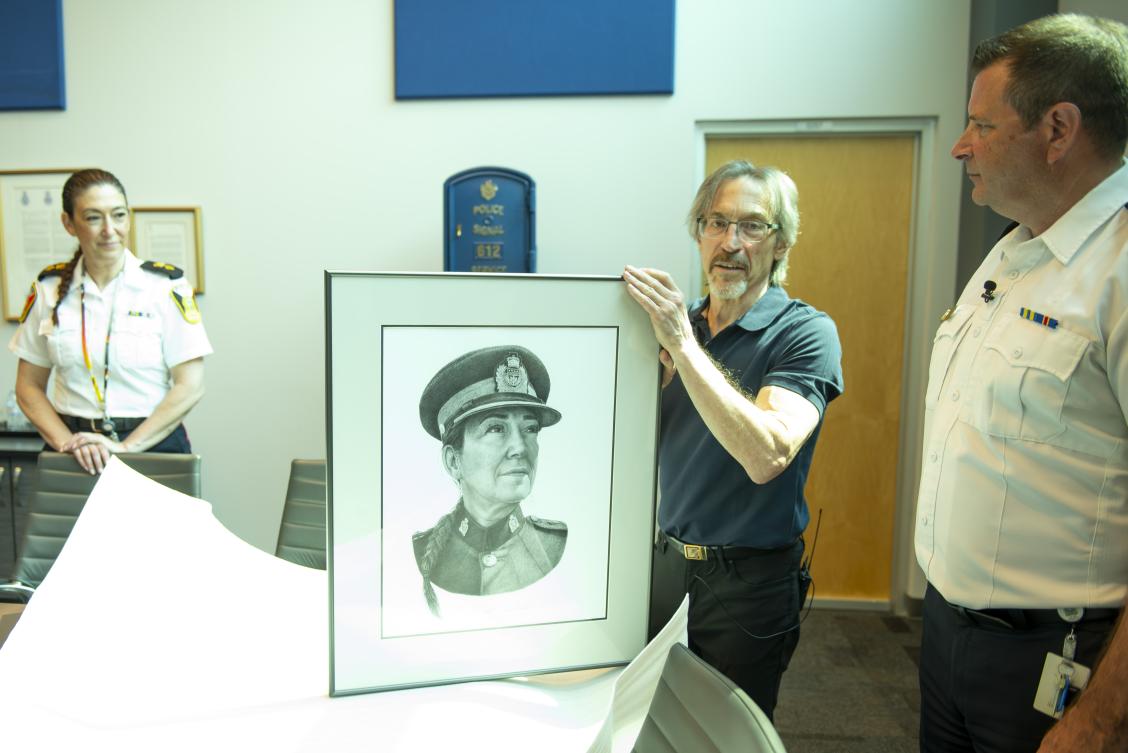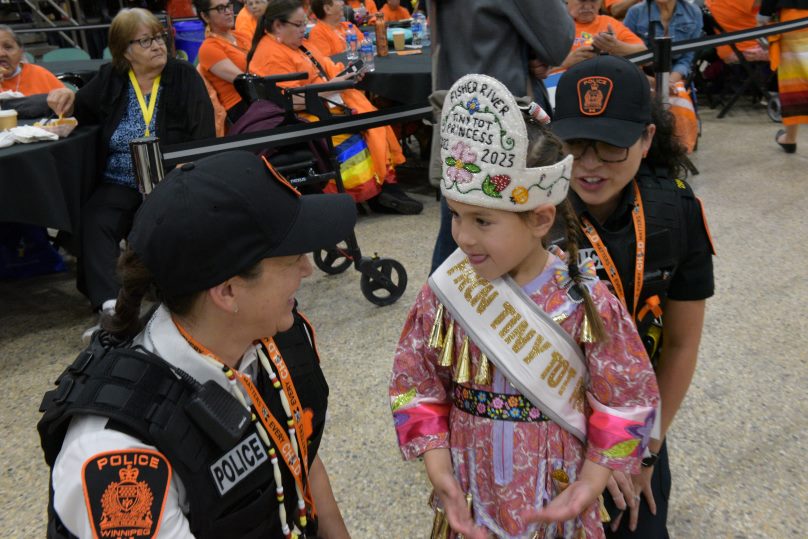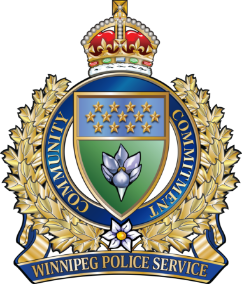
For nearly 30 years, artist Gerald Kuehl has sketched the faces and preserved the stories of Indigenous people across Canada. With each pencil stroke, he honours a life, a legacy, a voice.
"That's been my passion in life. I've drawn now over 375 individuals and counting. I continue to work. I felt that my creator brought me here to tell Indigenous stories, so that's what I do,” says Kuehl, who has become well known for capturing, preserving, and sharing Indigenous stories across Manitoba, the North, and the Prairie provinces.
His life’s work brings Indigenous stories to the forefront – through faces, through words, and through understanding. From Cree traplines to Inuit communities, Gerald has met nearly every person he’s drawn. These aren’t commissions. The relationships are built on trust. Rooted in respect.
This summer, Superintendent Bonnie Emerson had the honour of being the first person serving in law enforcement to be the subject of one of these treasured sketches. Fittingly, it was shared with her and the Service as part of Indigenous History Month.
“I remember when I bought his book and I showed it to my mom. As she was reading it, she recognized some people from Camperville, where she grew up. They were people who didn't have a title, but they spent their life committed to community,” shares Supt. Emerson.
“The stories, I think, are as important – perhaps more important – than the pictures, because you're able to see the stories in the eyes of each picture and see what the individuals have contributed. It's a part of our Canadian history. History and ceremony, especially for people who aren't able to be in positions of power, who aren't, generally speaking, given a voice. He amplifies that voice.”
Gerald says he didn’t draw her because of her rank, but because of her presence as an Indigenous woman, a leader, and a community builder.
“Her story is exceptional. She’s a true role model, I mean, not just as an Indigenous person – extremely successful, Indigenous woman – but I believe for all women,” he adds.
This is the first time Gerald has drawn someone from law enforcement, but it was never about the uniform. It was about the story.
Supt. Emerson grew up as an Indigenous female in Winnipeg’s North End, identifying with and connected to the Manitoba Red River Métis community. She later reclaimed her Treaty status as a member of Sandy Bay First Nation.
Since joining the Winnipeg Police Service in 1991, she has worked across Uniform Operations, Investigations, and Support Services, and now leads the Service’s Community Engagement portfolio.
A champion of community-driven safety, Bonnie helped launch the province’s Block by Block and Thunderwing initiatives and remains deeply involved in reconciliation and cultural outreach. She is Keeper of the WPS Eagle Staff and an advocate for non-violent approaches to public safety.
Bonnie serves on several local boards and co-founded Sleep in Heavenly Peace Winnipeg. She represents WPS nationally through the Canadian Association of Chiefs of Police and chairs the Manitoba Indigenous Policing Committee.
She is a Rotary Peace Fellow, a recipient of the Police Exemplary Service Medal, and holds a BA from the University of Manitoba. Above all, she believes police are peacekeepers for community.
The honour of being sketched by Gerald is not lost on her.
“I don't even know really how to put it into words because I was so touched and honoured, humbled...” shared Supt. Emerson. “Those are words that just can't convey it. I just respect what Gerald does so much.”
“It was difficult to be honored in the sense that no one person does this on her own. This was me and my colleagues and the caring and compassion that I come to every day and see how much officers care.”

For Superintendent Emerson, the portrait isn’t a personal spotlight. It’s a reflection of every officer committed to peacekeeping, and a symbol of possibility for every Indigenous girl watching.
“Indigenous girls in the community see this and maybe this is something that they think: You know what? I can do that too.”
Gerald’s work lives in books, museums, and in hearts. His pencil captures more than likeness. It captures truth.
“All I ever wanted to do, 1997 onward, is bring the lives of Indigenous people to mainstream Canadians and let them judge and realize what a magnificent people, what magnificent cultures we have,” says Gerald.
“Métis, First Nation, Inuit are a huge, beautiful, magnificent part of the fabric of Canadian culture now. And that was it – just that: to appreciate that. And that's all I continue to do so that people will get to appreciate these people and their cultures as much as I do.”
